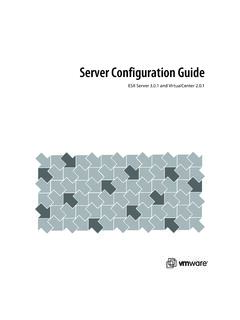Transcription of A Practical Guide to Computer Network & Internet …
1 2015 Babu Ram Dawadi Institute of Engineering, Pulchowk Campus, Tribhuvan University A Practical Guide to Computer Network & Internet Technologies Network Lab Manual: Babu Ram Dawadi Page 1 of 64 Preface Networking is a big domain under Computer science and engineering. There are several streams and area of specializations under Computer Network in which students shall have their own choices for their future career. The course contents of Computer Network under bachelor degree level is very basics.
2 It simply provides the overall theoretical knowledge on communication standards, protocols and Network programming. Students have to learn about lots of new terms and technologies in Computer Network making this a bit hard to grab the knowledge the sufficient knowledge on Computer . Hence, sufficient Practical activities and tutorial practices are required under this subject to verify the concepts and strengthen the Practical knowledge that shall be directly implemented in the real industries after graduation.
3 This lab manual on Computer Network is an attempt of my twelve+ years of experiences in teaching this subject. It helps course instructor for smooth lesson planning of his/her teaching and students to have more clarification on the theoretical knowledge achieved during the class hours. Students are instructed to do the lab tutorial step by step as an example first and then do given task after getting the Practical concepts on each lab. This reduces the confusion for both instructor and students about what to do next in the lab.
4 There are fourteen lab sheets including case study and final exam designed to be completed within the specified academic period (one semester course) starting from the basic concepts of Network hardware/software to advance level configuration up to routing, security implementation and different server systems deployment. I tried to cover the new networking technologies, tools, software/hardware on every lab with the objectives to provide sufficient latest knowledge on Computer Network to my valued readers.
5 Students have to complete the tutorial steps during the lab hours and submit the task and exercise work on the next lab. I would like to request all the instructors, students and well-wishers to have feedback/comments at or via about this manual that would definitely help me out to come up with the best manual further with new versions in the future. Thank you! Babu Ram Dawadi Asst. Professor, IOE Pulchowk Campus, Tribhuvan University Network Lab Manual: Babu Ram Dawadi Page 2 of 64 Table of Contents Lab No Description (Title) Page Number 1 Overview of Networks and layered communications, understanding of Network equipment, wiring in details 5 2 CAT6 UTP EIA/TIA 568A/B straight and cross-over wiring, testing 7 3 Linux OS (Ubuntu/CentOS) installation, practice on basic Linux commands and Networking commands (ifconfig, tcpdump, netstat, dnsip, hostname, )
6 9 4 Overview of IP Addressing and sub-netting, static ip setting on Linux machine, testing 13 5 Introduction to Packet Tracer, creating of a LAN and connectivity test in the LAN, creation of VLAN and VLAN trunking. 20 6 Case Study: Campus Network Operation Center Visit. 33 7 Basic Router Configuration, Static Routing Implementation 34 8 Implementation of Dynamic/interior/exterior routing (RIP, OSPF, BGP) 39 9 Firewall Implementation, Router Access Control List (ACL) 45 10 Packet capture and header analysis by wire-shark (TCP,UDP,IP) 49 11 Basic Frame Relay Implementation with PVC 54 12 DNS, Web, DHCP, FTP server configuration 58 13 Case study, design, presentation 14 Lab Exam, Report Collection, VIVA Network Lab Manual.
7 Babu Ram Dawadi Page 3 of 64 Computer Network Lab Lab Marks Distribution Lab Reports Attendance/Viva Final Exam Total Full Marks 40% 20% 40% 100% Overall Objective: The lab works in this course provides hands on training and knowledge about the analysis, design, troubleshooting, modeling, testing and evaluation of Computer networks. Students shall have access to real test-bed networks, virtual and simulated Network with the tools like tcpdump, wireshark, ip scanner, packet tracer, opnet, mininet, visio, Bosom, NetSim to fulfill the objectives set forth on each lab.
8 At the end, student shall be able to perform the Network and server administration like addressing management, switching (VLAN, VTP), routing and remote administration (SSH, Telnet, Hyperterminal), TCU/UDP/IP packet analysis, configuring of web, dns, dhcp and ftp servers over linux/unix OS. Students will gain the opportunity to design and develop networking model, simulation and testing with sufficient security measures. For Students: Students have to complete at least 10 to 12 lab activities throughout the semester to fulfill the objectives of the course Computer Network at Bachelor of engineering and Computer science.
9 Each lab manual is designed with lab objective, basic theoretical background, and sample example with necessary steps to operate with the networking tools and exercise. Before appearing into the lab, all are requested to learn the relevant activities in summary and explore theory/ Practical concepts of corresponding lab. Students have to do the exercise provided and submit the report into the next lab. Lab report to be submitted should include at least the following topics.
10 1. Cover page 2. Title 3. Objective(s) 4. Apparatus 5. Procedure (steps), (Explanation, topology if any, setup, configuration) 6. Testing and verification (if any) 7. Discussion and Conclusion Network Lab Manual: Babu Ram Dawadi Page 4 of 64 LAB 1 Lab No Description (Title) 1 Overview of Networks and layered communications, understanding of Network equipment, wiring in details 2 CAT6 UTP EIA/TIA 568A/B straight and cross-over wiring, testing Objective(s): To understand layered communications and protocols To feel and know the networking equipment (repeater, hub, bridge, switch, router, crimper, UTP, Fiber cable, connectors, patch panel, cable managers, racks, CAT6 straight and crossover wiring standards, LAN meter/tester, RJ-45) Network Hardware: Crimper/clamper, RJ-45 jack male/female, LAN/Cable tester, UTP, Fiber cable, HUB/Switch/Router/Bridge, patch panel, cable Repeaters are simple devices that work at the physical layer of the OSI.



